We do not know when the house on the corner of Ráday Street was opened, but it is certain that the inn was already called Két Oroszlánhoz [To the Two Lions] in 1775. When the city of Pest started keeping suburban land registers in 1734, the land and the house on it were listed under the name of master stonemason Lipót Antal Conty. In 1739, the city was hit by the plague, and the building was declared a quarantine house. Anyone who wanted to get inside the city walls was first subjected to a strict examination at the inn, they even had to wait for days, so that the symptoms of the disease did not appear, and only then could they enter one of the streets of Pest. In 1741, the epidemic ended, and in the same year, József Rolly became the new owner. In 1812, Mátyás Ranner bought the Két Oroszlán Inn.
.jpg)
The intersection of Ráday Street and Kálvin Square, on the right, is the former inn around 1890 (Fortepan/Budapest Archives, Reference No.: HU.BFL.XV.19.d.1.07.064)
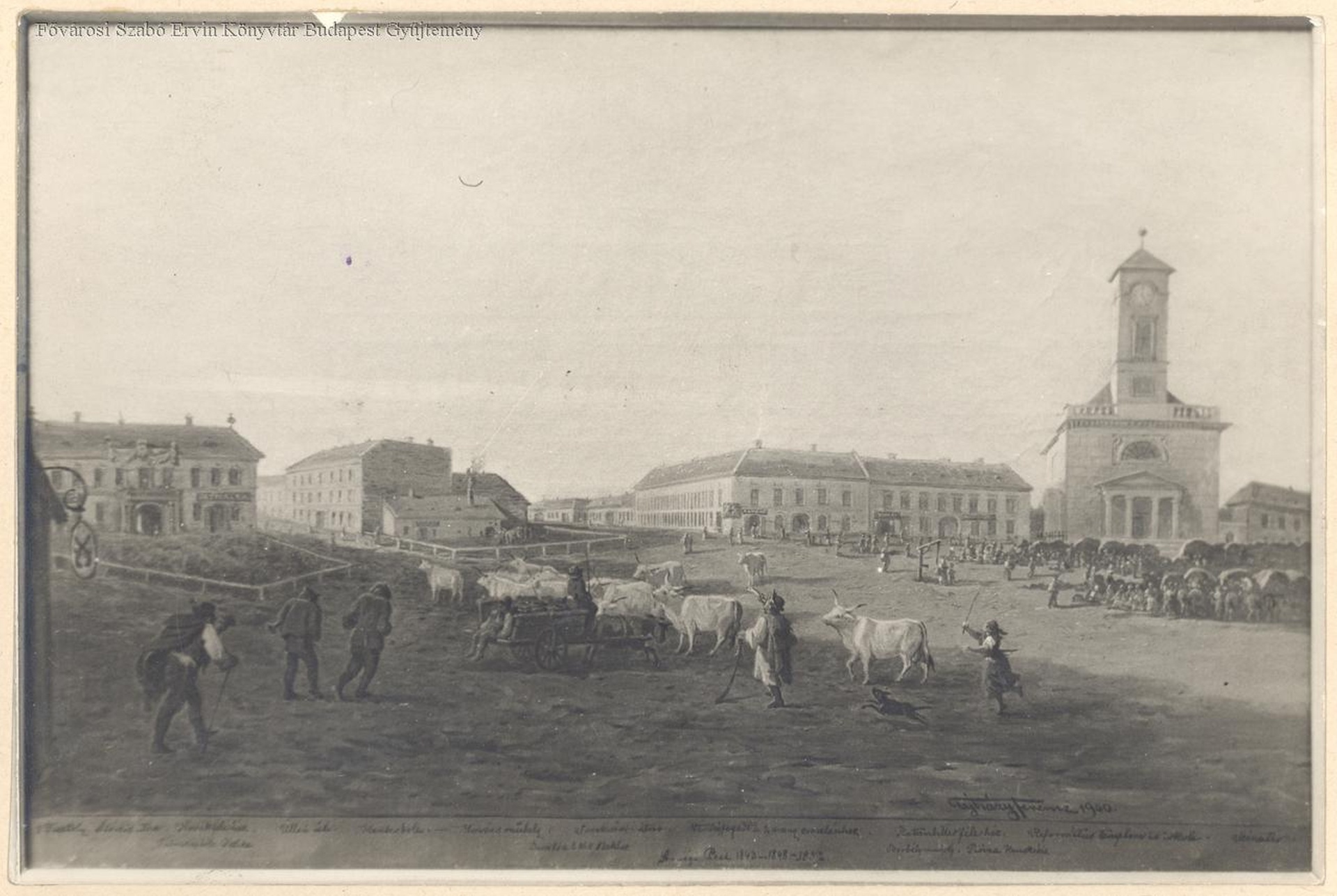
A reproduction of Ferenc Újházy's painting of Kálvin Square (circa 1900), the inn is the second house to the left of the Reformed Church (Source: FSZEK Budapest Collection)
In 1816, on his behalf, the architect Mátyás Zitterbarth drew up plans for the construction of a new, more spacious house, according to which the part of the lot facing Török Pál Street was left open for a later addition. The result was a two-story, slightly tilted L-shaped building facing Ráday Street, the driveway of which opened from today's Ráday Street, and the main entrance was accessible from Kálvin Square. The figure of two lions carved from stone above the gate was definitely visible by then.
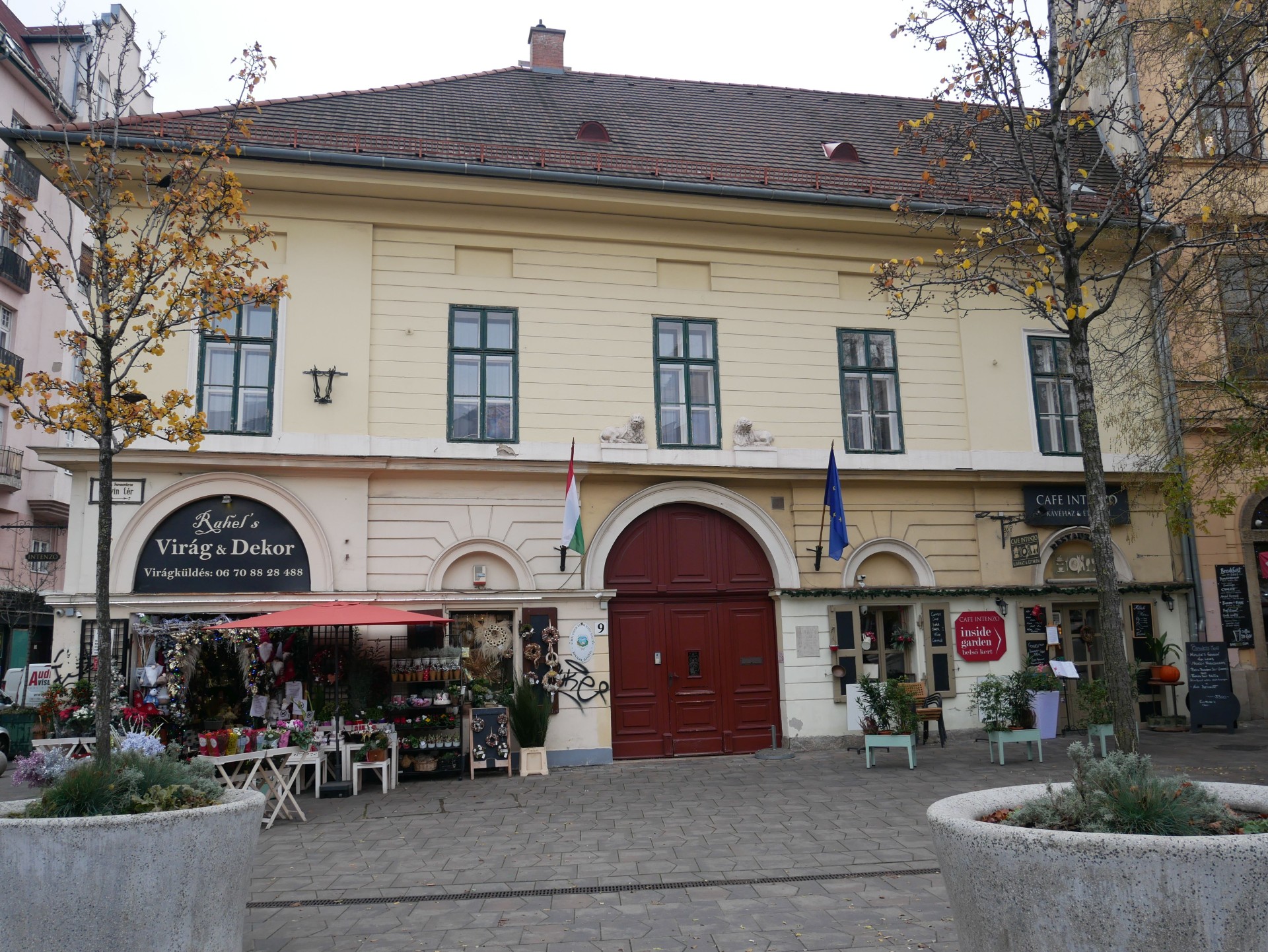
The former inn nowadays from Kálvin Square (Photo: Tímea Simon)
Ranner, who had considerable wealth, did not need to run the business himself, so he rented out the inn. In August 1816, Lipót Meiszl was the first to rent the house. He completely refurnished its 16 rooms and provided them with everything necessary for the comfort of the boarding guests.
In the summer of 1831, the first cholera epidemic that seriously affected Hungary reached Pest. In order to contain the disease, the Locotenential Council closed the pontoon bridges and, as is customary during plague epidemics, once again designated quarantine houses - including the Két Oroszlán Inn. On 17 July 1831, the increasingly dissatisfied and impatient citizens broke through the cordon. The crowd broke into the inn and several other buildings, but the innkeeper welcomed them with drinks at the entrance. It was thanks to this that only his billiard cues and his glasses were broken, no serious damage was done to the building. The Két Oroszlán Inn served as a temporary residence for many Ferencváros residents who lost their homes during the great Pest-Buda flood of 1838.
In 1860, the building already had 32 guest rooms, and the one-story wing on Török Pál Street, completed by that time, also accommodated 9 separate stables and a larger stable for 24 horses. While the first horse racetrack in Pest operated in the area near Üllői Road, bordered by today's Gyáli Road - Mester Street - Illatos Road, between 1827 and 1880, the Két Oroszlán Inn was packed with guests during the races. Kincsem, the most successful Hungarian racehorse to date, also rested here several times, naturally in a separate stable. In 1880, the racetrack was moved from Ferencváros, perhaps this was the reason why the inn began to decline rapidly, the descendants of Mátyás Ranner could only maintain it at the cost of increasing losses.
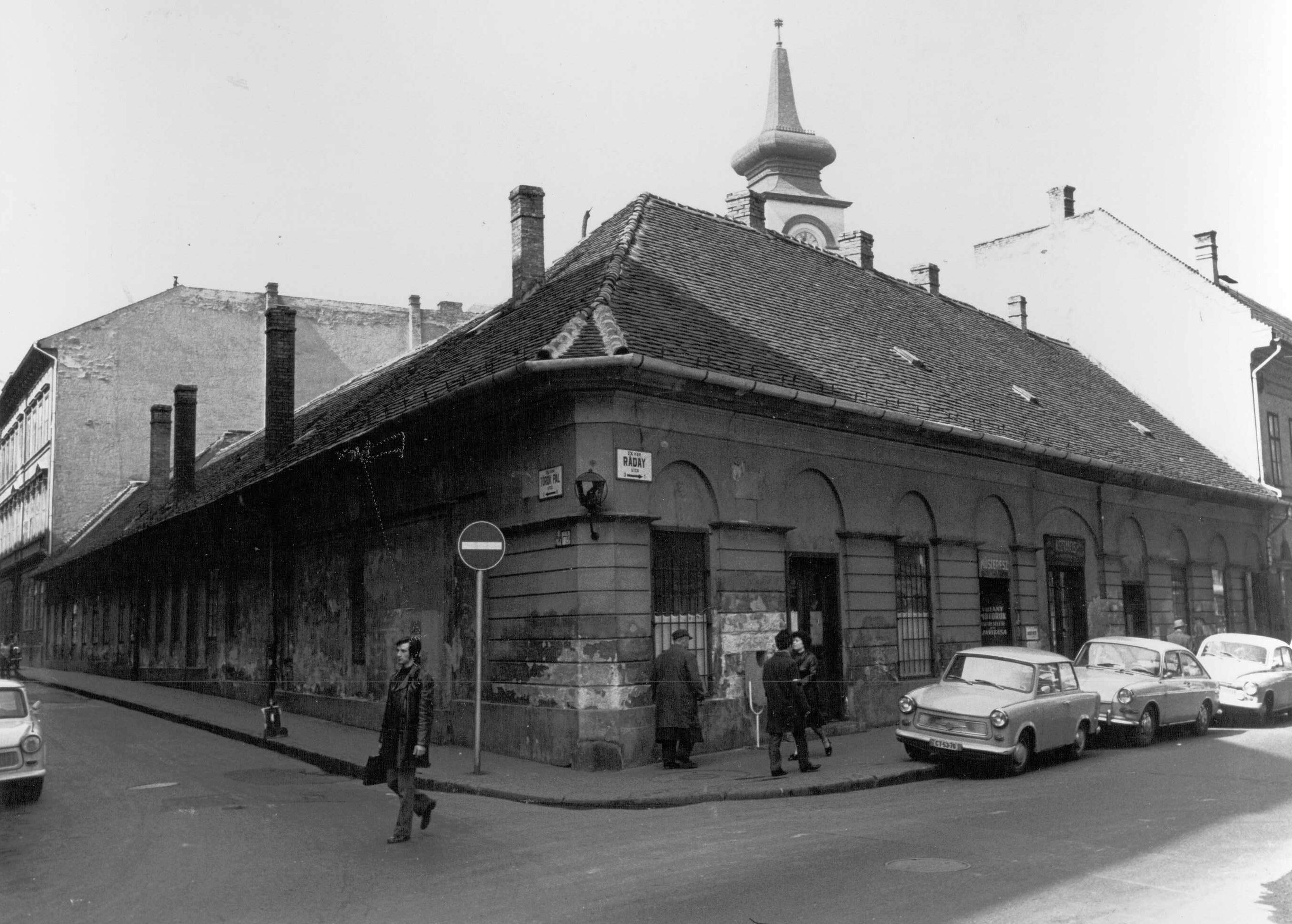
The rear part of the former inn on Török Pál Street around 1970 (Source: Ferencváros Local History Collection)
The General Assembly of Budapest finally decided to buy the house in 1881. The inn was closed on 1 August 1881. Tenants moved in upstairs, and shops were opened on the ground floor. In addition to the flats, the building was also home to an important institution, the Capital's Secondary School of Music, between 1912 and 1952. This school provided singing and musical instrument lessons for the students of secondary schools maintained by Budapest.
In 1934, Magyar Hírlap reported that the capital wanted to give it to the Reformed Church in exchange for the high school building on Lónyay Street, and an imposing palace would be built in its place. In the end, only half of the plan was realised, the Reformed Church became the owner. After World War II, the building came into the hands of the capital city, council flats were created on the first floor, for a while the 9th District registry office also operated here, the directorate of the complicatedly named Belkereskedelmi Gépkocsijavító Vállalat [Domestic Car Repair Company] moved to the place of the music school.
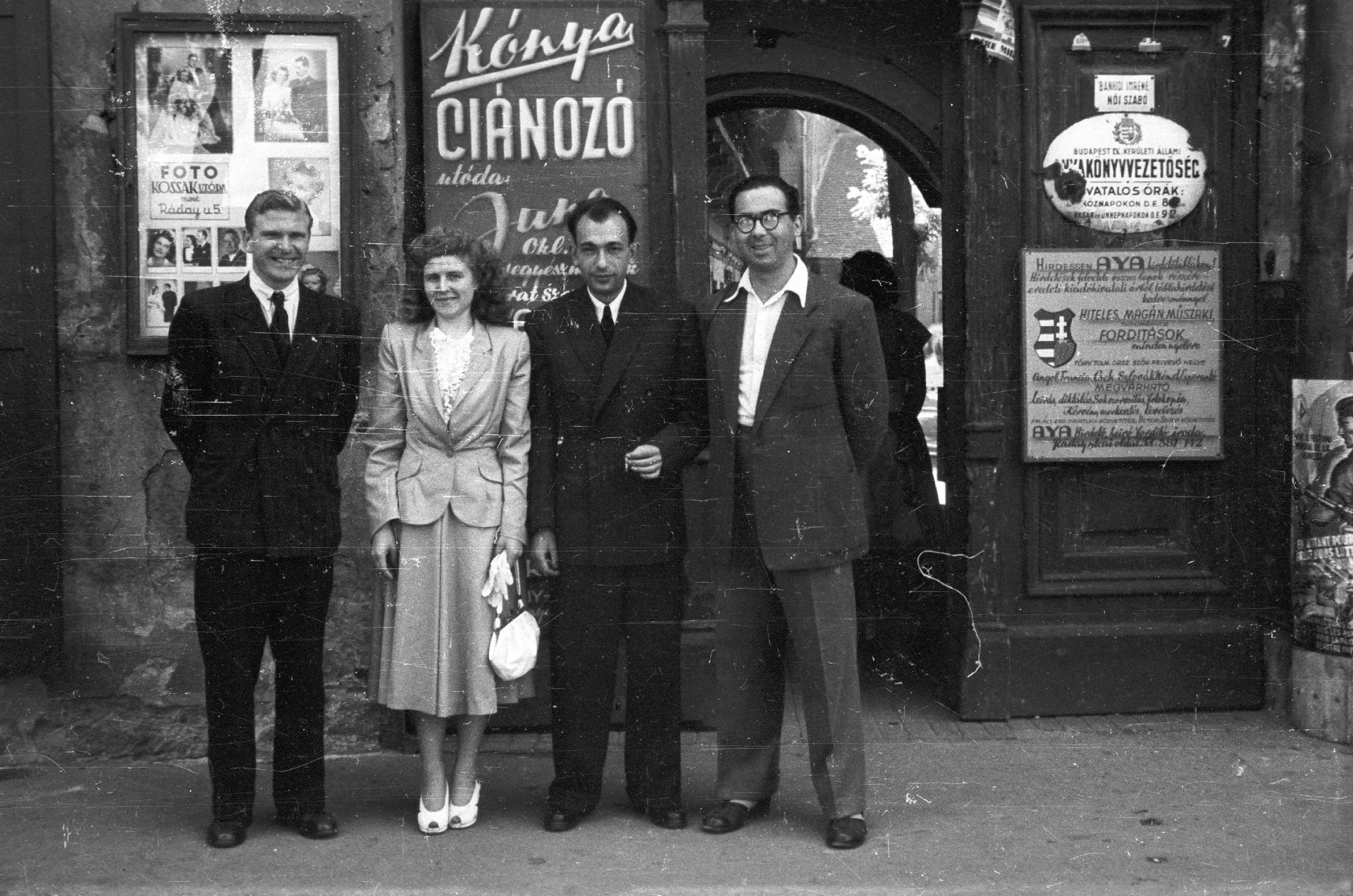
A married couple and their witnesses at the entrance of the former inn in 1948 (Photo: Fortepan)
In the second half of the 1990s, the church got the building back, and in 1997 the last tenement was liquidated. Currently, the Rector's office of the Károli Gáspár University of the Reformed Church occupies the premises on the first floor, and there are shops on the front-facing Ráday Street. The most beautiful part of the building is the carefully renovated courtyard and the statue in the courtyard, a seated female figure. One of the figures of the Danubius Fountain that once stood on Kálvin Square, is the lady symbolising the Sava River. After World War II, it was housed in a public warehouse building on the banks of the Danube, until it was decided that the capital's huge ornamental fountain would be re-carved and the remaining parts would not be used. It was placed in the yard of the former inn in 1959, but just like the building, the statue was not repaired.
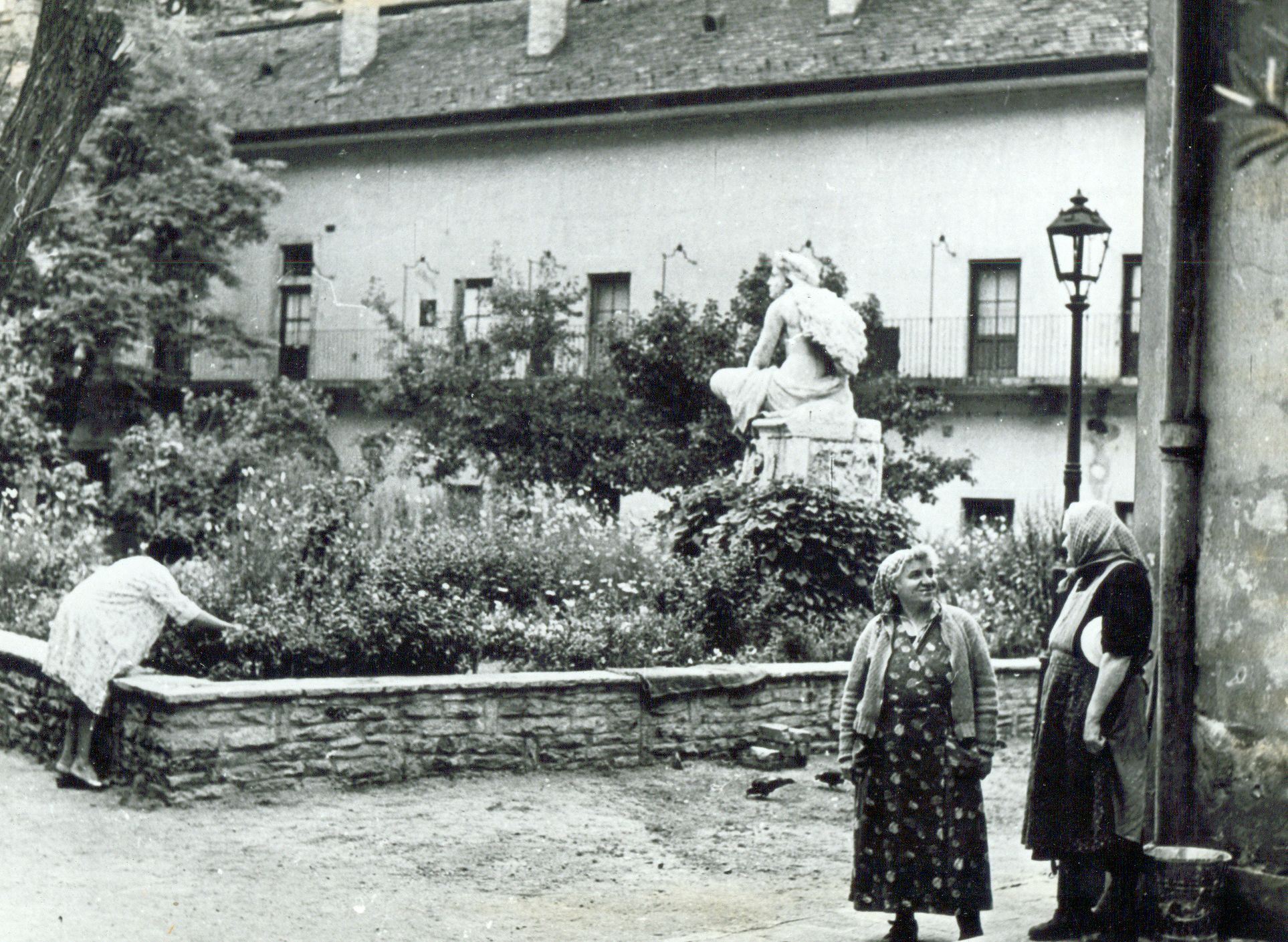
Residents in the yard of the former inn around 1970 (Photo: Ferencváros Local History Collection)

The courtyard around 1970 (Photo: Ferencváros Local History Collection)
For more than 30 years from the beginning of the 1970s, the former inn, which saw better times, was characterised by continuous deterioration. At the end of the 2000s, first, the renovation of the building began, then the garden was arranged, and today the oldest house in Ferencváros is suitable for a higher education office, restaurants and small shops, and chamber concerts and theatre performances can be seen in the courtyard from spring to autumn.
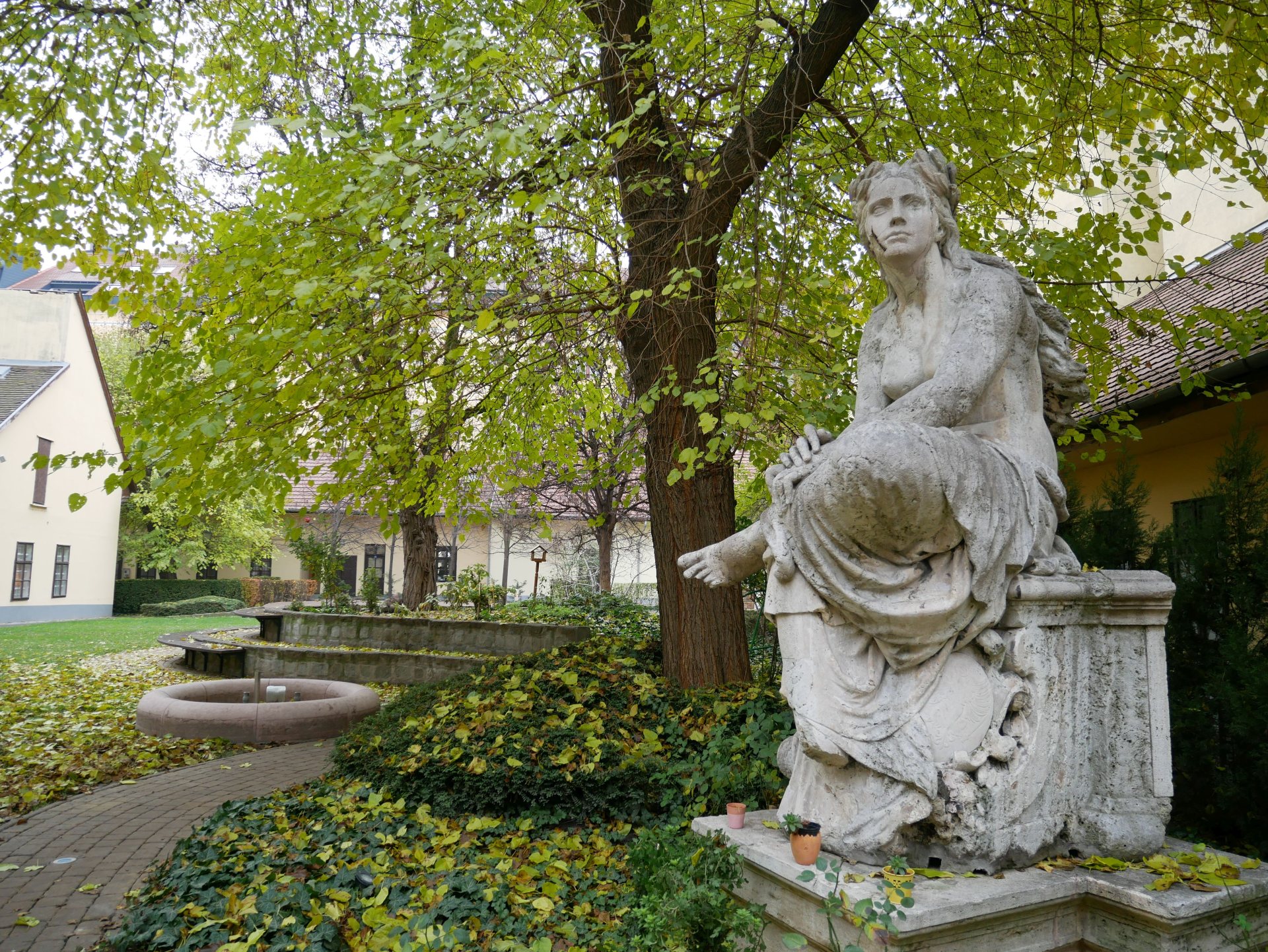
The courtyard and the Sava statue in December 2022 (Photo: Tímea Simon)
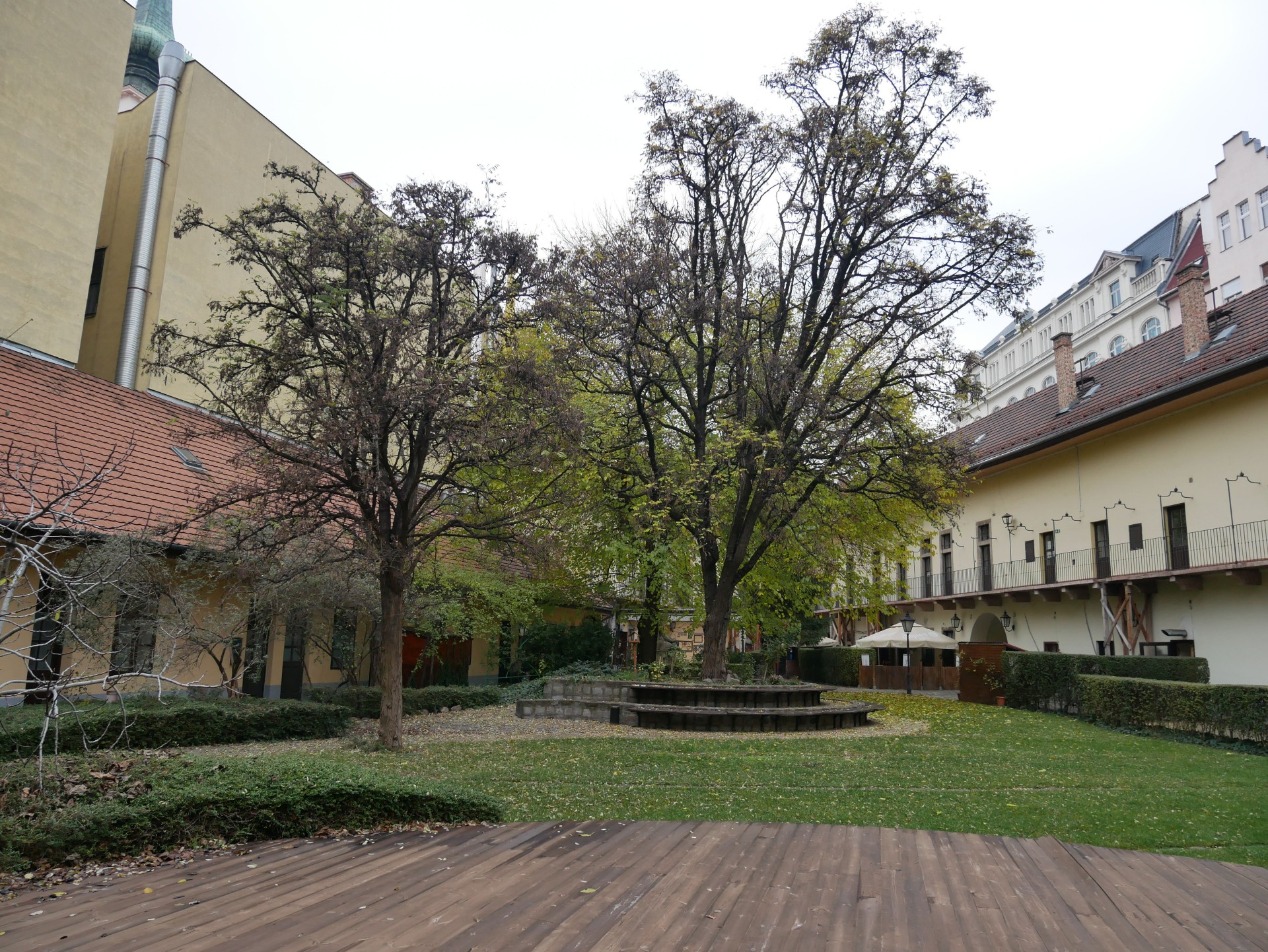
The yard in December 2022 (Photo: Tímea Simon)
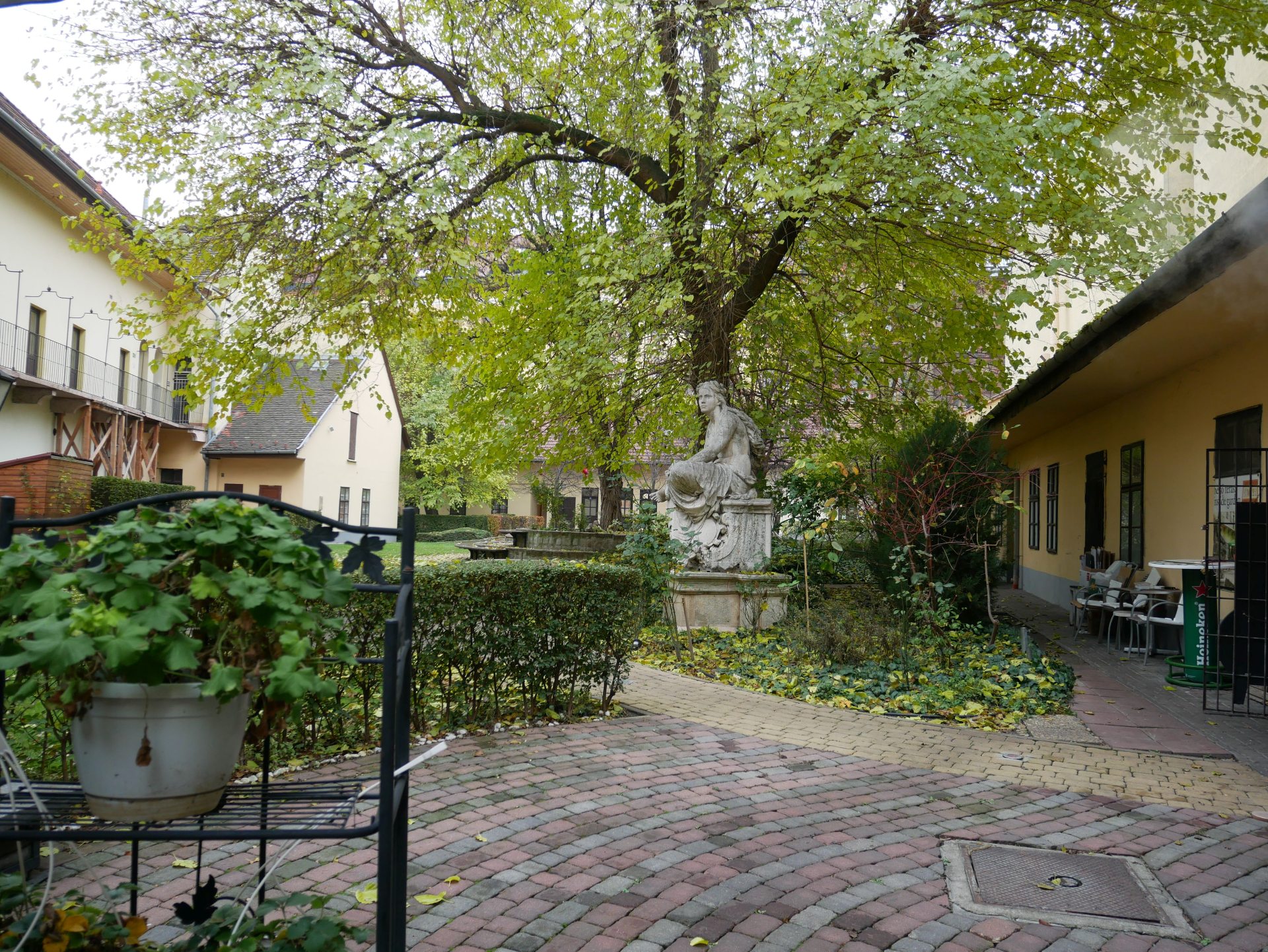
The yard in December 2022 (Photo: Tímea Simon)
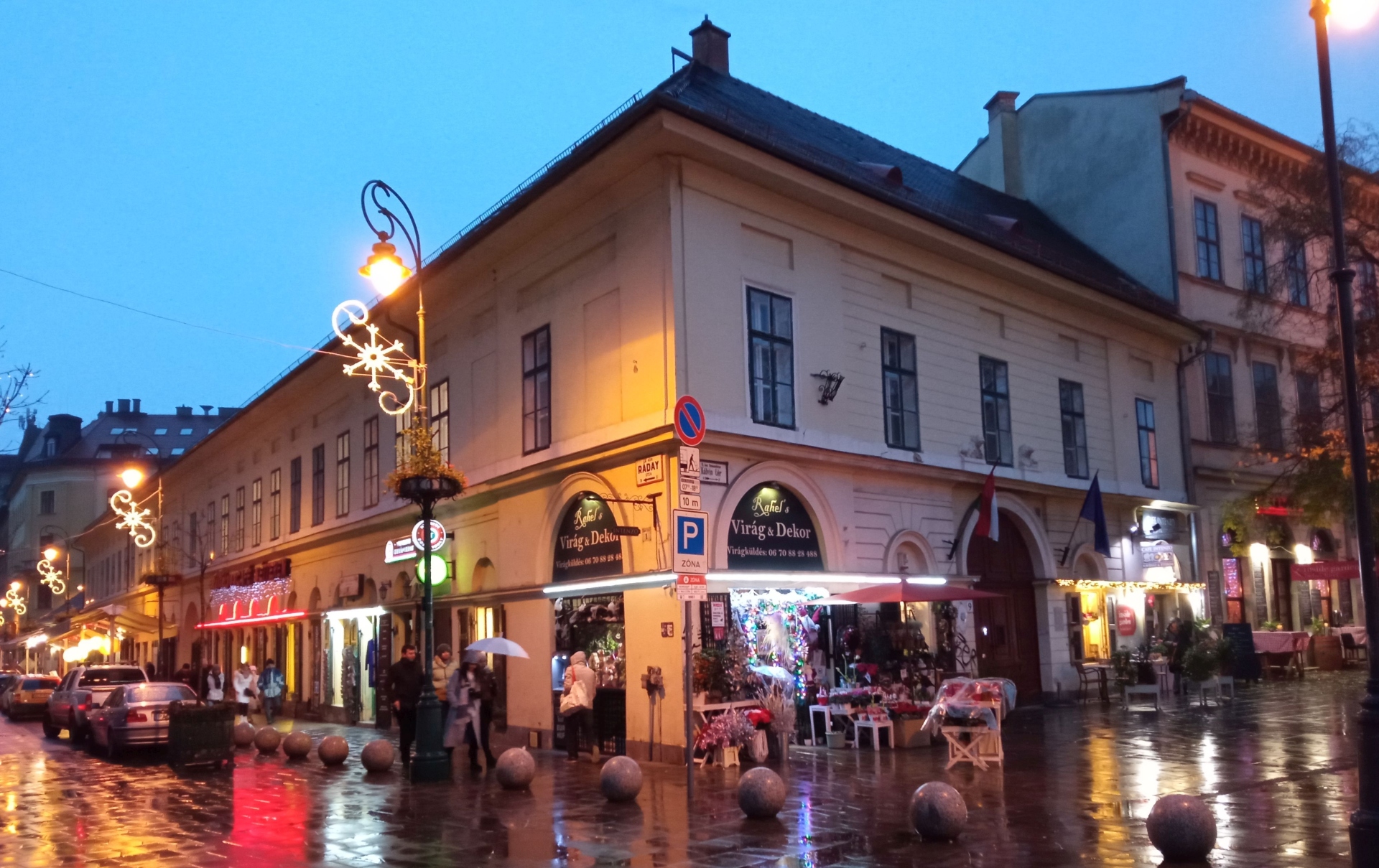
The building in the early evening atmosphere (Photo: Tímea Simon)
Cover photo: The former Két Oroszlán Inn (Photo: Tímea Simon)

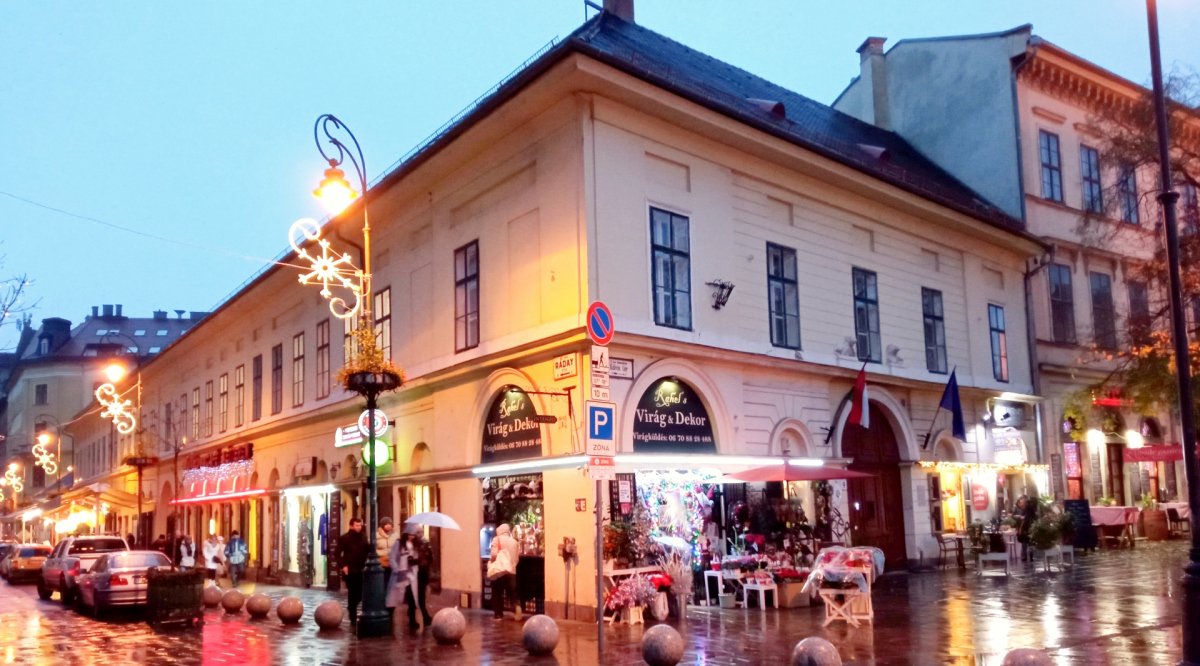


































Hozzászólások
Log in or register to comment!
Login Registration